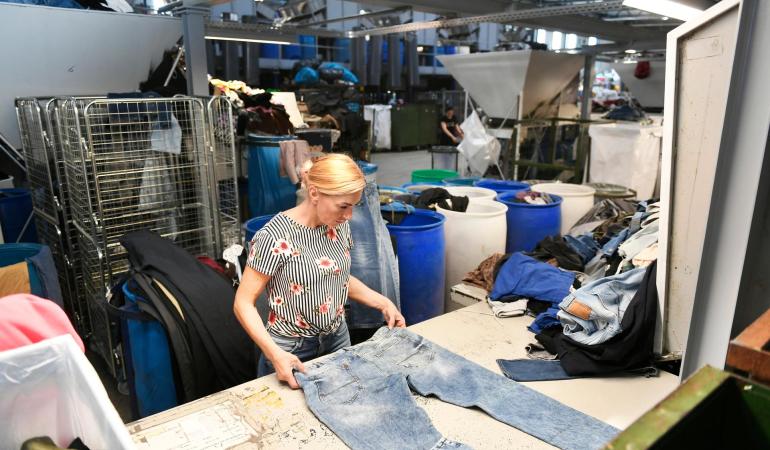
Textiles are produced using chemicals. Although many hazardous chemicals may no longer be used in textile production, they may still be present in donations of old clothing. RIVM has conducted a study into the safety of recycled textiles. For the moment, the chemicals that are present in clothing do not appear to cause health problems during recycling, but sorting textiles is a labour-intensive and therefore expensive process. This is because of the wide variety of materials used in clothing production. It is therefore important from a recycling standpoint that textiles made easier to separate. Designers should take this into account when choosing materials.
Textile recycling still in its infancy
The Dutch Government has set a target of a circular economy by 2050. This involves the reuse of materials and resources for the same or different purposes. For textiles, the aim is that textiles produced in 2030 contain at least 30% recycled fibres. However, this is currently the case for only 1–4% of textiles. To achieve this aim by 2030, more consumer clothing will need to be recycled.
Chemicals do not appear to be a problem
Clothing must comply with the European regulation for the registration, evaluation, authorisation and restriction of chemicals (REACH). RIVM has studied the presence of hazardous chemical substances in various types of both newly produced and recycled fibres. This will help those who produce and use recycled textiles to sort out potentially hazardous materials. Right now, recycled fibres derived from collected textiles are only incorporated into new products on a small scale. New jeans that are partially made with cotton fibres derived from collected jeans are an example of such products.
For this study, RIVM used available data on the chemicals present in new and collected textiles. Based on these data, RIVM thinks there is currently a high probability that clothing made from recycled textiles (collected from consumers) meets the legal limits for chemicals. Whether this will remain the case will depend on the amounts and types of textiles that will be recycled in the future.
Textile recycling opportunities to be identified at the design stage
Textile recycling is a labour-intensive process. Cotton jeans, for instance, often consist of other materials, such as elastane (an elastic material), sewing thread and zips. This diversity of materials makes it difficult to reprocess textiles into recycled fibres.
It is therefore important that designers learn more about textile recycling processes, so that they can take these into account when designing textile products. Examples of how they could do this include using fewer types of textile fibres and ensuring that they are easy to separate.
This study was commissioned by the Netherlands Food and Consumer Product Safety Authority (NVWA).